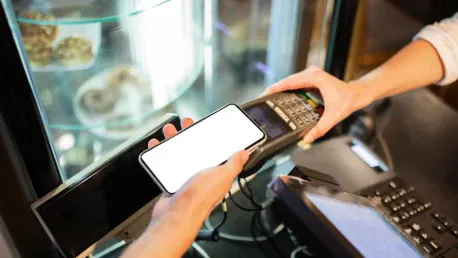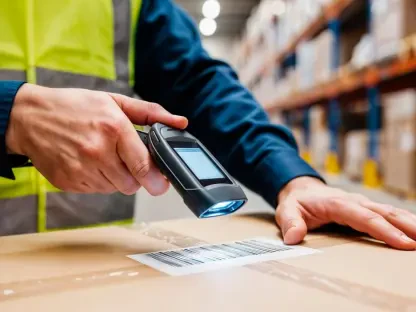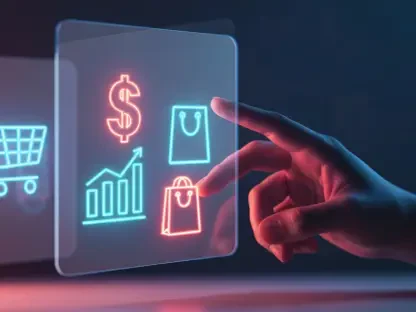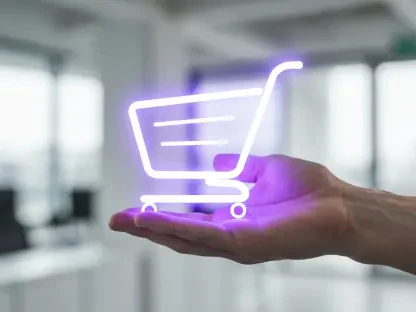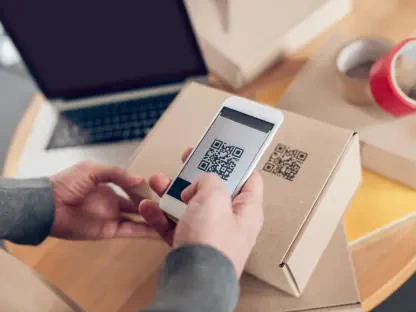The resurgence of brick-and-mortar commerce marks a significant shift from the dominance of online shopping seen during the pandemic. With 2025 now here, data indicates a clear value in the tactile in-store shopping experience, spurring the need for retailers to enhance their point-of-sale (POS) systems. This renewed interest in physical retail is driving innovations in POS technology, blending in-store shopping with digital features to create a hybrid approach that leverages the best of both worlds. This seamless integration of physical and digital is transforming the retail landscape and shaping how businesses engage with their customers.
The Hybrid Shopping Experience
Retailers are now focusing on creating a seamless integration between online and in-store interactions. This hybrid model demands that merchants examine and potentially upgrade their POS technologies to facilitate seamless transactions anywhere within the store. The goal is to provide customers with the flexibility to use their preferred payment methods and access embedded financing options at the most opportune moments. As a result, while traditional cashier checkouts remain a staple of shopping, they are no longer the sole point of sale.
Foot traffic in stores is bouncing back, though with a few digital enhancements. According to PYMNTS Intelligence, over 43% of U.S. shoppers have visited stores to purchase goods, and 19% utilized digital features within the store, such as checking product details, pricing, and order histories. Consumers are also showing a strong preference for using their preferred payment methods, evidenced by Visa’s report that 77% of holiday spending occurred in physical stores. The pace of in-store spending acceleration exemplifies this trend, with Visa noting a 4.1% year-over-year increase in total retail spending during the recent holiday season, compared to a 1.6% increase from the previous year.
Younger Consumers Driving Change
Younger consumers, in particular, are driving the surge in physical retail by pushing brands to offer connected online-to-offline experiences. Bellamy Grindl, founder of the retail consulting company Retailytics, emphasizes that younger generations crave immersive shopping experiences that go beyond the product itself. For brands to succeed in this evolving landscape, they must embrace an omnichannel approach that ensures a seamless integration between online and in-store interactions. Technologies such as interactive displays, mobile checkout, and loyalty app enhancements enhance the shopping experience, turning routine visits into memorable moments.
The technological transformation of POS systems is also a key factor in this shift. These systems are transitioning from traditional cash registers to more portable forms, such as tablets and mobile devices. PYMNTS Intelligence, in collaboration with Discover® Global Network, reveals that SoftPOS technology—which enables contactless payments via tablets and phones—is gaining traction. Nearly a quarter of merchants believe that mobile commerce solutions could replace traditional POS systems within a few years.
The Rise of Contactless Payments
Financial reports from major payment processors like Visa and Mastercard illustrate the growing prevalence of contactless payments in face-to-face transactions. Visa’s Q4 earnings report disclosed that tap-to-pay transactions comprised 54% of in-person transactions in the U.S., marking a 13 percentage point increase from the previous year. Mastercard reported that contactless payments account for over 70% of global in-person payment volumes. This shift towards contactless transactions underscores the importance of integrating mobility and flexibility into POS systems.
Fiserv, another key player in the POS space, has introduced an updated suite of tools for small businesses via its Clover POS and business management service. The new hardware options, such as Clover Compact and Flex Pocket, are designed to enhance the flexibility and efficiency of the POS experience. In its latest earnings report, Fiserv reported a 28% growth in Clover sales and a 15% increase in annualized gross payment volume, reaching $311 billion.
Innovations in POS Solutions
GoDaddy has also entered the fray with a smaller POS solution tailored for small businesses. Their Smart Terminal Flex, which fits inside an employee’s apron pocket, allows for seamless customer interactions. These innovations reflect a broader trend towards making POS systems more adaptable and accessible, catering to the modern consumer’s expectations.
The overarching trend is clear: to meet the evolving needs of their customer base, both retail and banking sectors must continue to innovate and seamlessly integrate digital advancements with traditional services. This dual approach ensures that they remain relevant and competitive in a rapidly changing landscape, driven by consumer preferences and technological advancements.
Shifting Banking Preferences of SMBs
In another segment, the article shifts focus to the banking preferences of small and mid-sized businesses (SMBs), particularly in rural areas. It notes a growing inclination among SMBs to switch from national banks to local financial institutions (FIs), such as community banks and credit unions (CUs). The appeal of these local entities lies in factors like personalized service, lower fees, and better access to local support. Despite the dominance of national banks, local banks can capitalize on their strengths to capture a larger market share, especially among SMBs with lower revenue.
The PYMNTS Intelligence report titled “Community Banks Appeal to Small Communities, But …” in collaboration with i2c, points out that local banks and CUs have gained favor among SMBs, particularly those with lower revenue or located in rural settings. Nearly 49% of rural SMBs prefer local banks or CUs, compared to just 25% that opt for national banks. Similarly, 32% of SMBs with revenue under $150,000 prefer smaller banks and CUs, while 44% favor national institutions. Notable factors driving these preferences include the location and personalized customer service offered by local banks, which can foster close-knit relationships.
However, the article also highlights a critical challenge for local banks and CUs: lagging digital capabilities. Modern SMBs expect advanced digital banking services—a domain where national banks excel. The discrepancy leaves SMBs feeling underserved by local banks, despite their strong community engagement. To remain competitive, local banks and CUs need to invest in enhancing their digital services. By doing so, they can combine the convenience of modern technology with the personalized touch that businesses appreciate.
The overarching trend is clear: to meet the evolving needs of their customer base, both retail and banking sectors must continue to innovate and seamlessly integrate digital advancements with traditional services. This dual approach ensures that they remain relevant and competitive in a rapidly changing landscape, driven by consumer preferences and technological advancements.
Conclusion
The revival of brick-and-mortar retail signifies a noteworthy shift from the online shopping surge observed during the pandemic. As we welcome 2025, data shows the undeniable appeal of the tactile in-store shopping experience, prompting retailers to upgrade their point-of-sale (POS) systems. This rekindled interest in physical retail is propelling advancements in POS technology, integrating in-store shopping with digital features to forge a hybrid model that harnesses the advantages of both worlds. This smooth fusion of physical and digital shopping is revolutionizing the retail industry, altering how businesses connect with their customers. Retailers are increasingly focusing on enhancing customer experiences by leveraging cutting-edge POS systems that can handle not only traditional transactions but also e-commerce functionalities. This shift is driven by consumer demand for a more personalized and interactive shopping journey, which involves blending physical touchpoints with digital conveniences. Consequently, retailers are investing in technologies that provide a synchronized and engaging shopping experience, ensuring they remain competitive in an evolving market.
